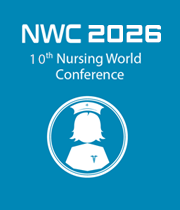Title : Revamping data collection processes significantly improves facility IHD-53h HEDIS controlling hypertension quality metric and patient engagement
Abstract:
Our facility continuously seeks to promote improvements in global patient health by providing patient-centered care which focuses on controlling hypertensive chronic disease through the utilization of multidisciplinary and systemic process improvement, standardized nursing documentation, and staff education which is derived from the High Reliability Organizational and Lean Six Sigma improvement principles and processes.
Audience Take Away:
- The data collection processes are just as important as the data itself. Our facility has five ways to properly document blood pressure (BP). Documentation includes: the use of hypertension clinical reminders, averaged home blood pressure readings; use of a standardized nursing note which directly inputs BP readings into the patient record, the vital signs recorded from the vital sign wall units during patient visits automatically dinput into the PCP visit documentation, and the COVID-19 tracking note.
- Proper documentation is a function of computerized data collection processes, indicating a need for system redesign. Direct process observation and chart review processes indicated there was a data collection systemic failure, in part, occurring when the vital sign wall units collected and input the BPs into our vital signs computer package. A system redesign occurred when Clinical Engineering remapped the wall units using CPT (Current Procedural Terminology) codes instead of location data elements. Proper documentation of blood pressure now relies upon the newly remapped vital sign wall unit modules located mostly located in primary care, as well as throughout the facility, to record patient BPs.
- A small test of change directed at two patient panels using the documentation methodologies and the remapped vital sign wall units indicated this project would positively impact the IHD-53h quality metric. BP documentation fail rates for these two teams decreased by 33% and 25%, resulting 78% and 64% of hypertensive diagnosed patients in those two panels had BPs below 140/90, respectively.
- Our multifaceted approach to controlling hypertension implemented by the Improvement Team yielded an 11% improvement in our facility IHD-53h HEDIS quality metric, increasing it from 55% in 11/2022 to 66% in 7/2023. This was an unanticipated 3% increase over the anticipated project targeted SMART goal set of 63%. As of 10/2023, the facility IHD-53h HEDIS quality metric continued to improve to 67.73%, just 2.27% shy of the national patient population 70% HEDIS metric targeted goal.
- The most important aspect of patient centered care is for nurses to teach, promote, and encourage patients on how they can help healthcare professionals to manage their chronic disease by independently through increased patient engagement, as seen through increases in nurse/patient/clinical pharmacy appointments New clinical pharmacy appointment referrals increased from 16.7% in 4/2023 to 20% as of 9/2023. Referrals to clinical pharmacists are generated from primary care nurse video and face-to-face patient chronic disease management appointments. These appointments focus on teaching of proper BP technique, education on diet, exercise, and other lifestyle modification to positively impact BP, and the importance of logging BP and heart rate data. These logged BP and heart rates are reviewed by prescribing pharmacists and primary care providers to supplement lifestyle modifications with pharmaceutical medications, as needed, to prevent BPs from becoming refractory.
- Nursing and support staff education must include a definition of HEDIS hypertension quality metrics and how staff’s use of best practices and documentation impacts quality metrics. This educative process assists staff in developing a deeper understanding of how their actions, techniques, and documentation actively contributes to patient health quality metrics which, in turn, is a reflection of the overall health of our patient population.
- Because our facility continues to focus on meeting and exceeding HEDIS health and chronic hypertensive disease management of our patient population, this quality improvement project is one of several which serves as the foundation for future controlling hypertension improvement multidisciplinary projects. To combat this global issue, our project is now part of our facility’s national archived systemic redesigns available for reference to other healthcare systems within our national network to build upon to further improve our individual facility, regional and national IHD-53h hypertension quality metric as we strive to meet and exceed the IHD-53h HEDIS controlling hypertension metric.



